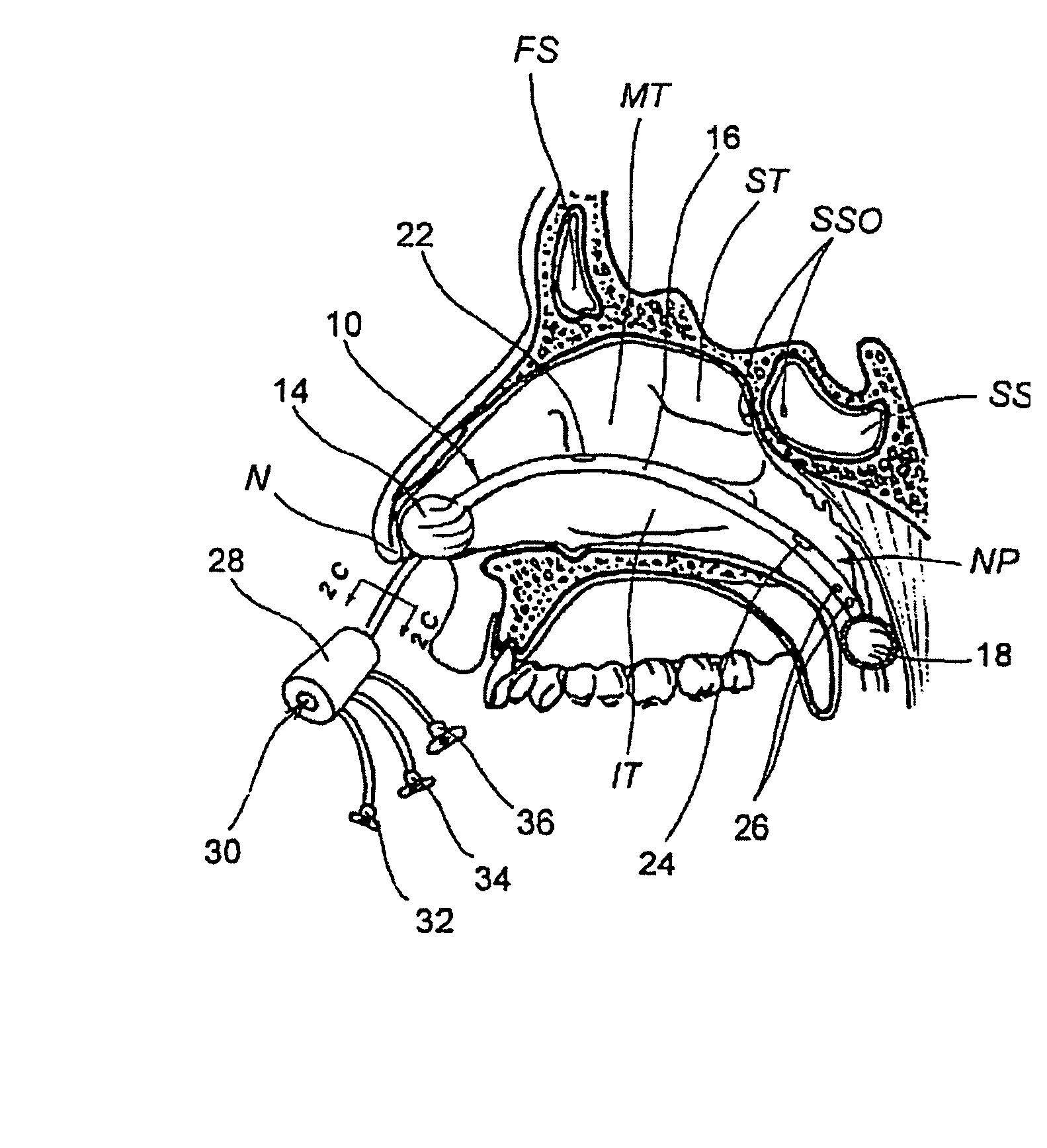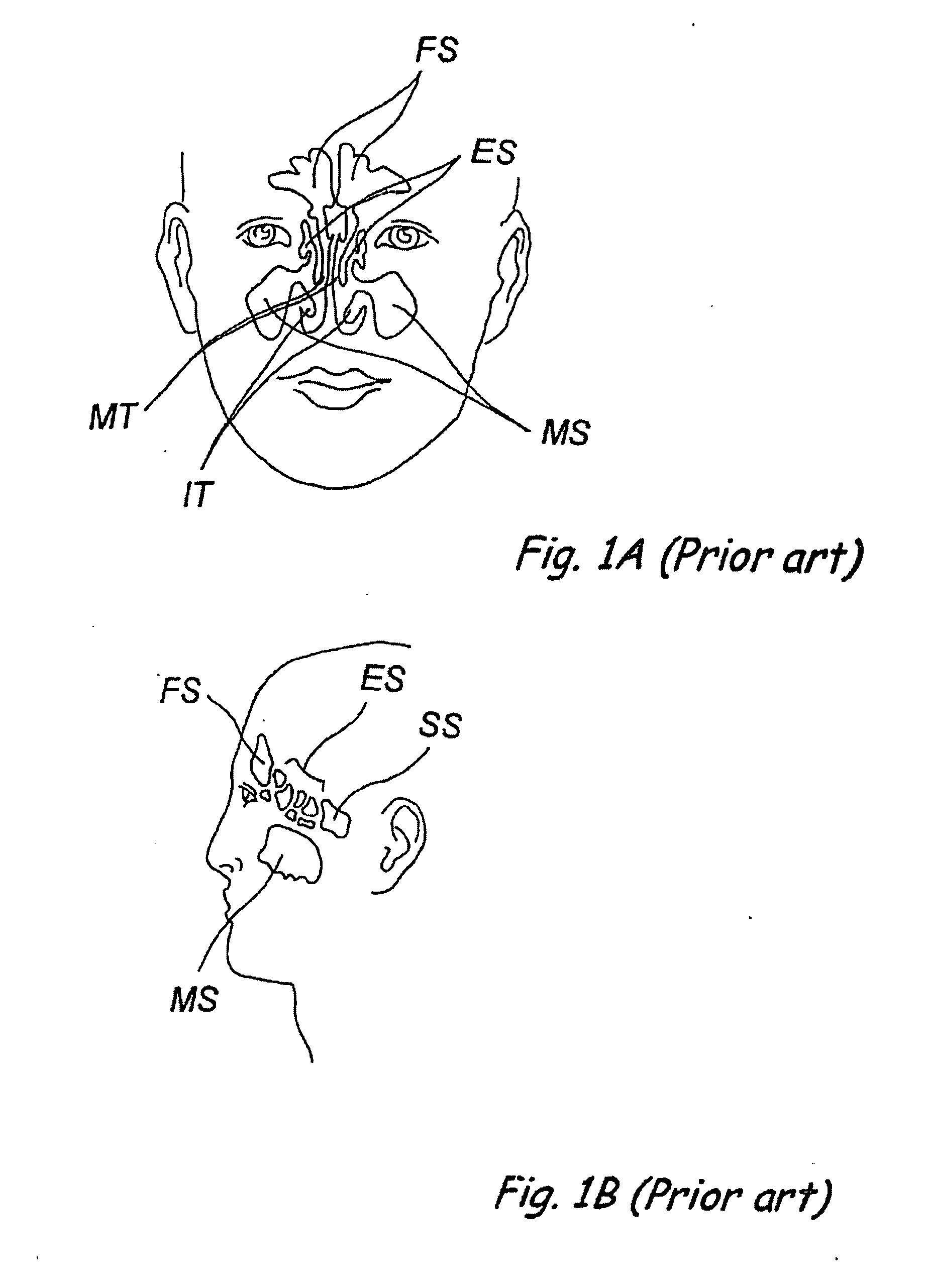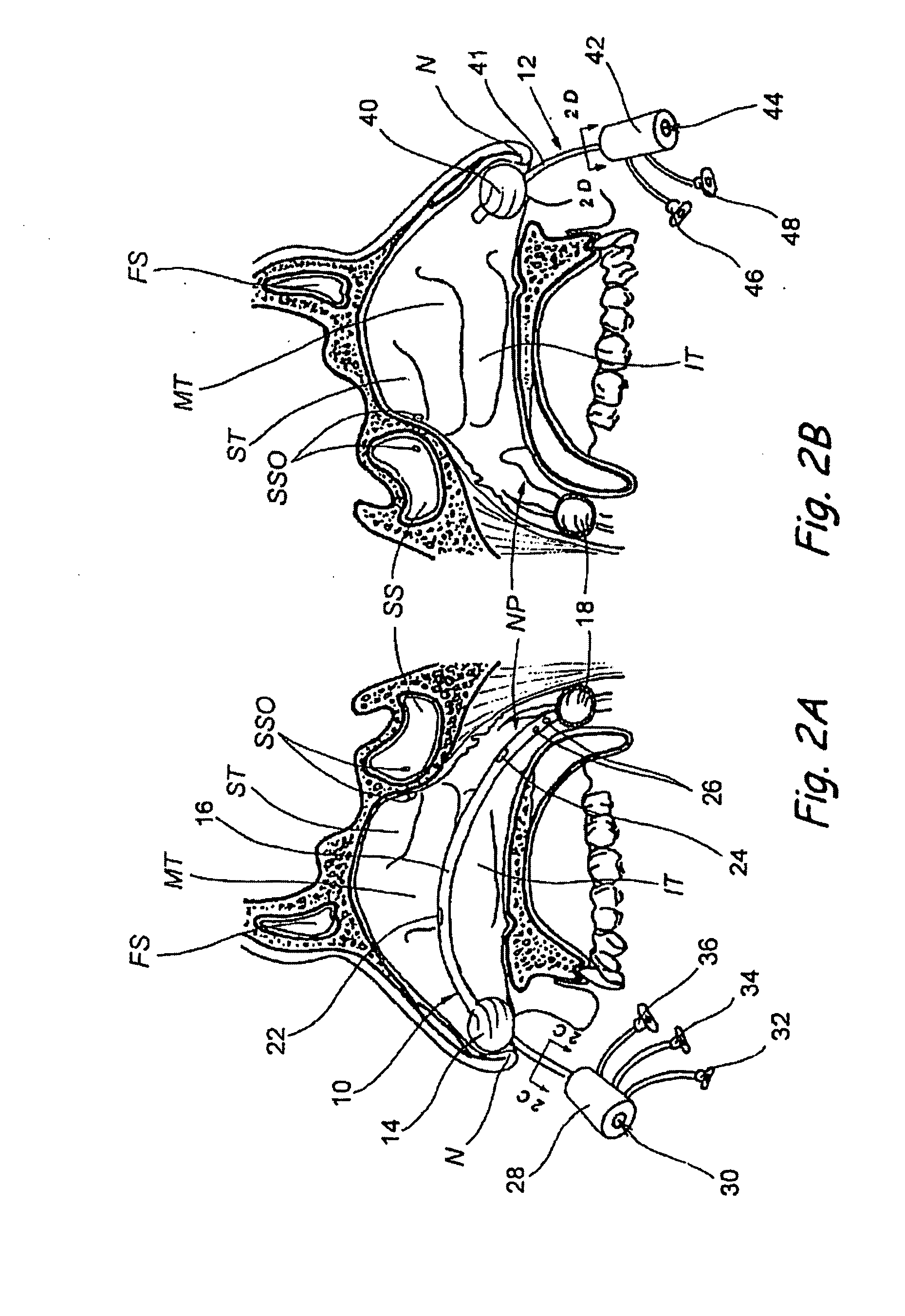Devices, systems and methods for diagnosing and treating sinusitis and other disorders of the ears, nose and/or throat
a technology of sinusitis and other disorders of the ear, nose and/or throat, applied in the field of medical devices and methods, can solve the problems of reduced ability of the paranasal sinuses to function normally, damage to the epithelium that lines the sinuses, and mucosal congestion within the paranasal sinuses
- Summary
- Abstract
- Description
- Claims
- Application Information
AI Technical Summary
Benefits of technology
Problems solved by technology
Method used
Image
Examples
Embodiment Construction
[0122] The following detailed description and the accompanying drawings are intended to describe some, but not necessarily all, examples or embodiments of the invention only and does not limit the scope of the invention in any way.
[0123] A number of the drawings in this patent application show anatomical structures of the ear, nose and throat. In general, these anatomical structures are labeled with the following reference letters:
Nasal CavityNCNasopharynxNPSuperior TurbinateSTMiddle TurbinateMTInferior TurbinateITFrontal SinusFSEthmoid SinusESSphenoid SinusSSSphenoid Sinus OstiumSSOMaxillary SinusMS
[0124] The human nose has right and left nostrils or nares which lead into separate right and left nasal cavities. The right and left nasal cavities are separated by the intranasal septum, which is formed substantially of cartilage and bone. Posterior to the intranasal septum, the nasal cavities converge into a single nasopharyngeal cavity. The right and left Eustachian tubes (i.e., a...
PUM
 Login to View More
Login to View More Abstract
Description
Claims
Application Information
 Login to View More
Login to View More - R&D
- Intellectual Property
- Life Sciences
- Materials
- Tech Scout
- Unparalleled Data Quality
- Higher Quality Content
- 60% Fewer Hallucinations
Browse by: Latest US Patents, China's latest patents, Technical Efficacy Thesaurus, Application Domain, Technology Topic, Popular Technical Reports.
© 2025 PatSnap. All rights reserved.Legal|Privacy policy|Modern Slavery Act Transparency Statement|Sitemap|About US| Contact US: help@patsnap.com



